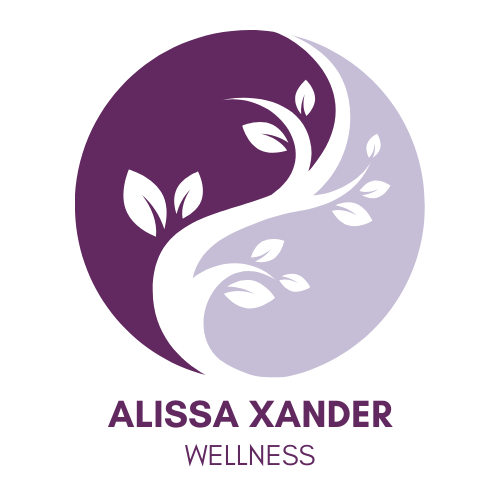Embracing Abhyanga: The Ancient Ayurvedic Art of Self-Massage

In a fast-paced world filled with constant hustle and bustle, it’s essential to carve out moments of tranquility and self-care. One practice that holds immense potential for nourishing the body, soothing the mind, and promoting overall well-being is Abhyanga. This ancient Ayurvedic self-massage ritual has been cherished for centuries.
Originating from the Sanskrit words “abhi” (meaning “into” or “towards”) and “anga” (meaning “limb” or “body”), Abhyanga translates to “oil massage” and involves the application of warm oil to the entire body using gentle, rhythmic strokes. This therapeutic practice is deeply rooted in Ayurveda, the ancient Indian system of medicine, and is believed to balance the doshas (energetic forces) within the body—Vata, Pitta, and Kapha—thus promoting harmony and vitality.
The benefits of Abhyanga extend far beyond mere relaxation. Here’s why incorporating this sacred self-care ritual into your routine can be transformative:

Nourishes the Skin
Abhyanga provides deep hydration and nourishment to the skin, leaving it soft, supple, and glowing. The warm oil penetrates the skin’s layers, moisturizing and replenishing it from within. Over time, regular Abhyanga practice can help alleviate dryness, dullness, and rough patches, promoting a radiant complexion.
Supports Circulation and Detoxification
The gentle massage strokes used during Abhyanga stimulate blood circulation, enhancing the delivery of oxygen and nutrients to cells while facilitating the removal of metabolic waste and toxins. This detoxifying effect can help improve overall skin health, reduce inflammation, and promote a clearer, more vibrant complexion.
Calms the Nervous System
Abhyanga has a profoundly calming effect on the nervous system, making it an effective remedy for stress, anxiety, and tension. The rhythmic motions of the massage soothe the mind, induce a sense of relaxation, and promote mental clarity and focus. Incorporating Abhyanga into your daily or weekly routine can help you unwind, release built-up tension, and cultivate a more profound sense of inner peace.
Supports Joint Health and Mobility
The therapeutic benefits of Abhyanga extend beyond the skin’s surface to the underlying muscles, joints, and connective tissues. The gentle manipulation of muscles and joints during the massage helps improve flexibility, reduce stiffness, and alleviate discomfort associated with conditions like arthritis or muscle tension. Regular practice supports joint health, enhances mobility, and promotes overall physical well-being.
Balances the Doshas
According to Ayurveda, imbalances in the doshas can manifest as physical or emotional symptoms, impacting overall health and well-being. Abhyanga is believed to harmonize the doshas, bringing them back into equilibrium and restoring optimal health. By selecting the appropriate oil and incorporating specific massage techniques tailored to your dosha or current state of imbalance, you can customize your Abhyanga practice to suit your unique needs and preferences. You can even start without using any oil if you prefer.

Incorporating Abhyanga into your self-care routine doesn’t have to be complicated or time-consuming. With just a few simple steps, you can reap the myriad benefits of this ancient Ayurvedic practice:
1. Choose Your Oil: Select a high-quality, organic oil suitable for your body type and needs. Popular options include sesame oil for its grounding and nourishing properties, coconut oil for its cooling and moisturizing effects, or almond oil for its light and easily absorbable texture. You can also infuse the oil with Ayurvedic herbs or essential oils for added therapeutic benefits.
2. Prepare Your Space: Create a serene and inviting environment for your Abhyanga practice. Set aside a quiet corner of your home where you can relax and unwind without distractions. Play soft music, dim the lights, and light a candle or burn some incense to enhance the ambiance and promote relaxation. I also recommend putting an old towel on the floor.
3. Warm the Oil: Before starting your massage, gently warm the oil by placing the container in a bowl of hot water or using a gentle heat source. The oil should be comfortably warm to the touch but not too hot, as excessive heat can cause discomfort and may damage the skin.
4. Begin Your Massage: Start by applying a small amount of warm oil to your scalp and hair, massaging in circular motions to nourish the scalp and promote healthy hair growth. Then, move on to the rest of your body, using long, sweeping strokes on the limbs and circular motions on the joints. Pay special attention to areas of tension or stiffness, using firm but gentle pressure to release any knots or tightness.
5. Allow Time for Absorption: After completing your massage, allow the oil to penetrate your skin for 10-15 minutes to reap its full benefits. You can use this time to practice deep breathing, meditation, or simply relax and unwind.
6. Cleanse and Hydrate: After the massage, rinse off any excess oil in a warm shower or bath, using a gentle soap or cleanser as needed. You may want to put a towel on the shower floor to keep from slipping.
7. Pat your skin dry: Use a soft towel and if you’d like, you can add a thin layer of oil to seal in moisture and further nourish the skin.
Abhyanga is much more than a simple massage—it’s a sacred self-care ritual that honors the body, nourishes the soul, and promotes holistic well-being. By embracing this ancient Ayurvedic practice, you can tap into its transformative power and cultivate a deeper connection to yourself and the world around you. So, why not indulge in a little Abhyanga today? Your body, mind, and spirit will thank you for it.
Want more support on your health and self-care journey? Send me a message to set up a time to chat.
